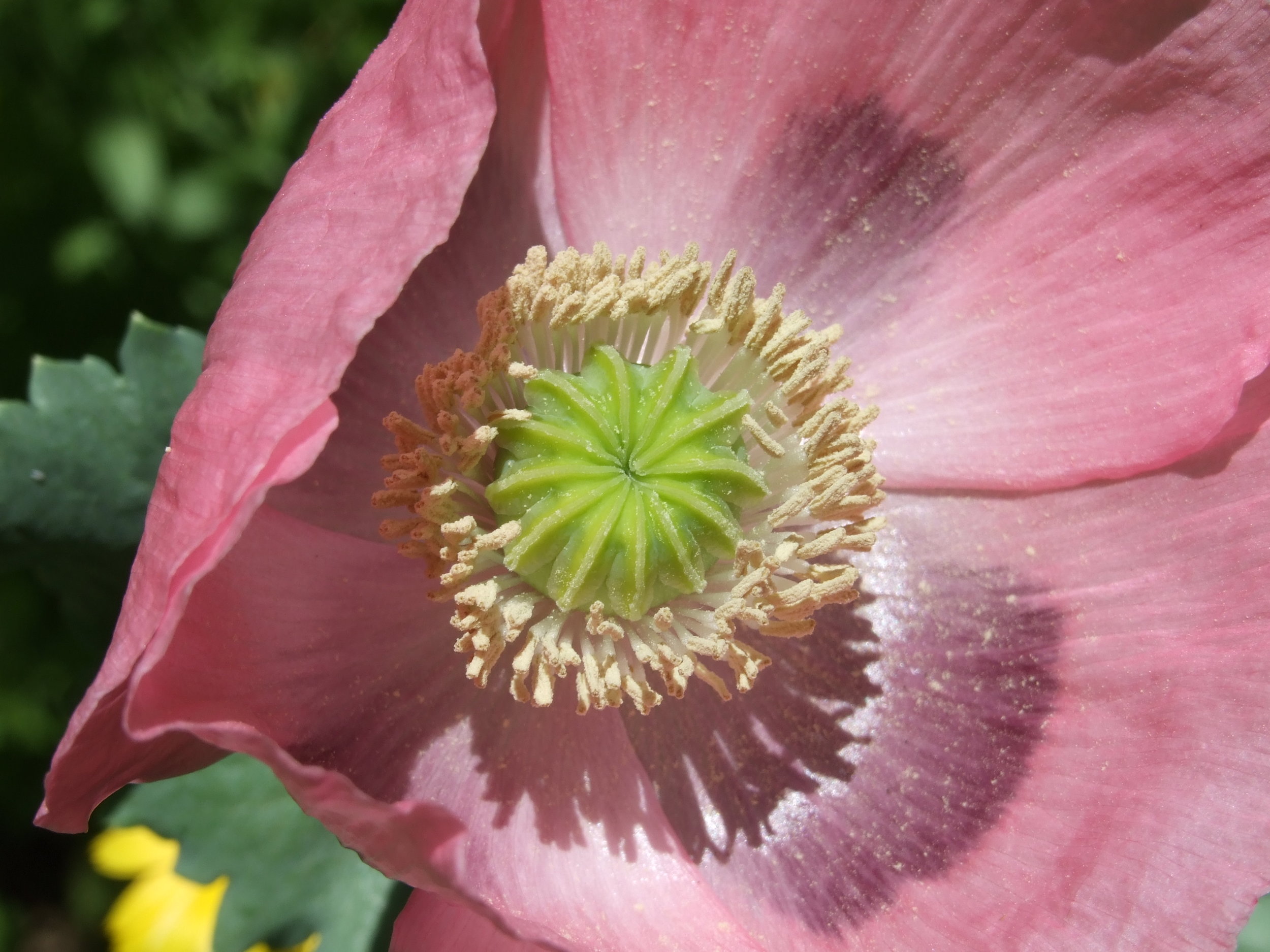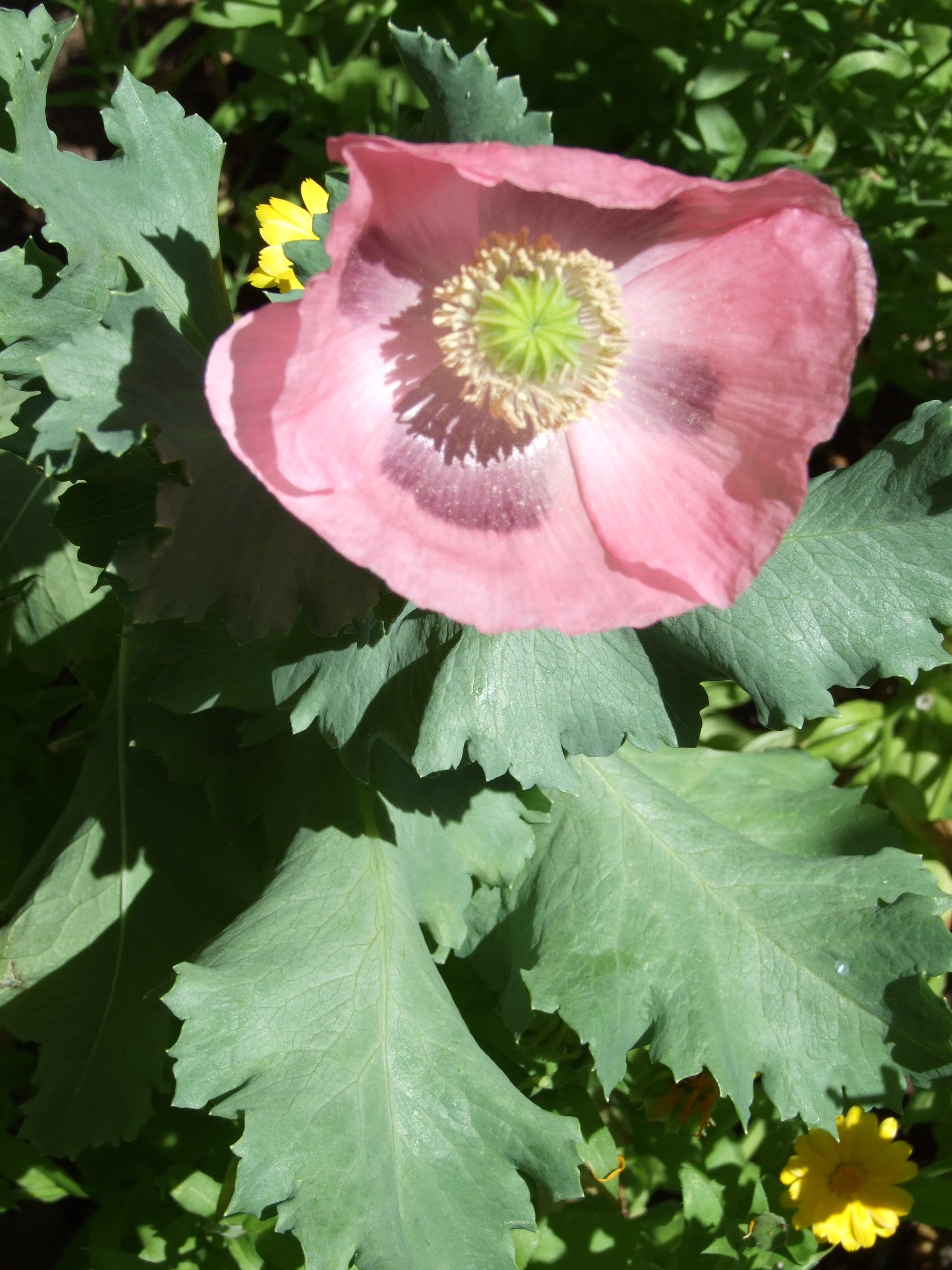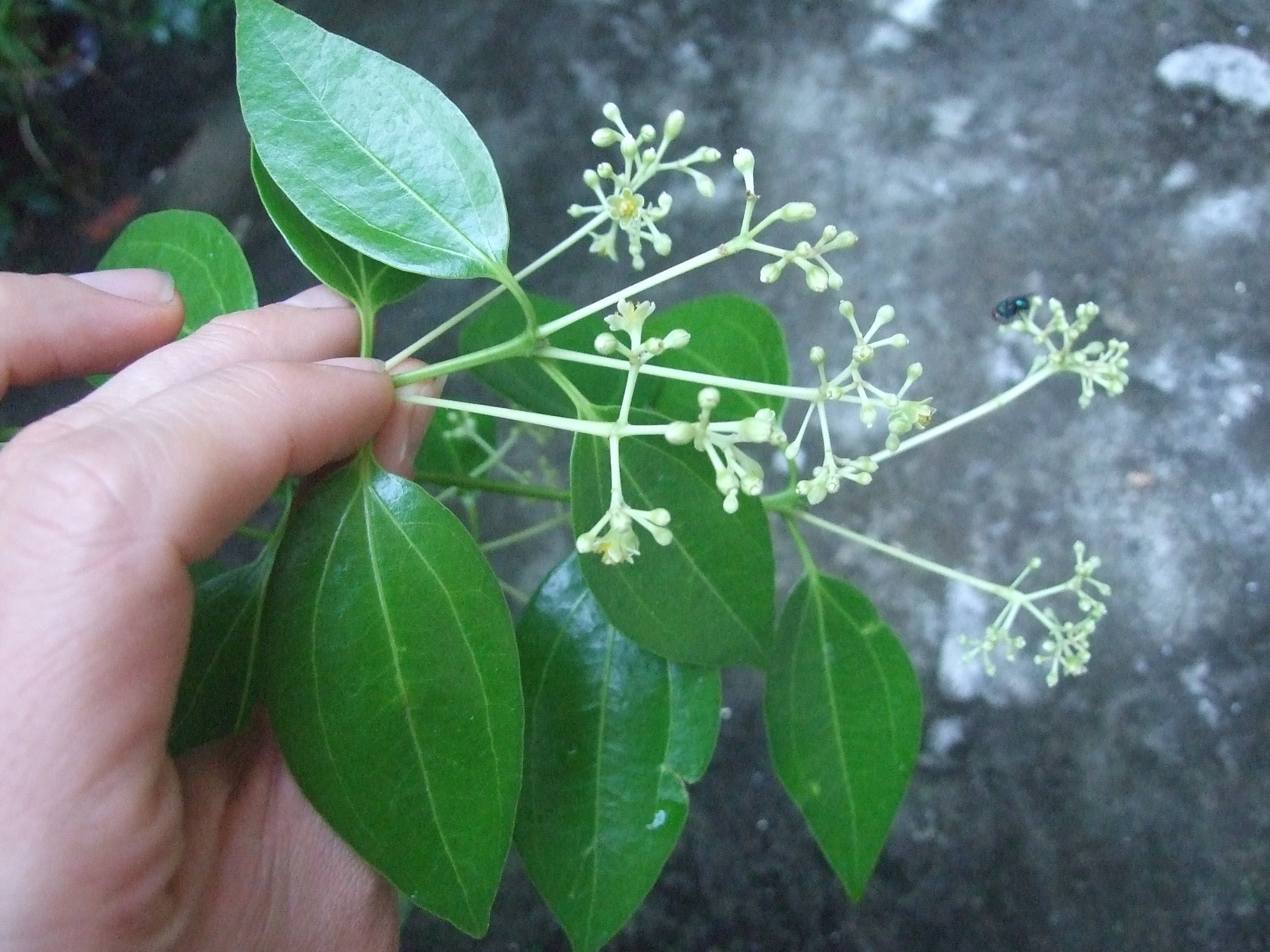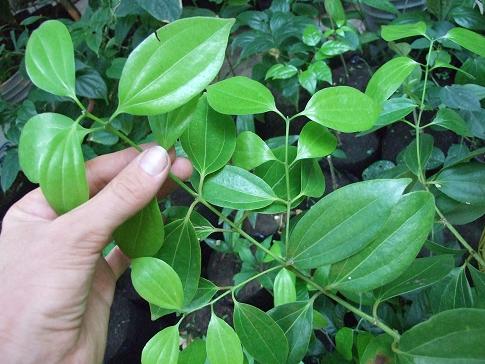The opium poppy is an erect annual herb, growing up to a meter and a half in height with large hairless, almost grayish-green, serrated leaves. The large flowers are solitary, born on slender stalks, with large papery petals, as can be observed in the photos below. The seedheads have a very distinctive appearance, not unlike that of a saltshaker.
The opium poppy is a cultigen of unknown origin, believed to be indigenous to southwestern Asia. Really, it can not be said with certitude where its original home was. Poppy seeds have been found during excavations of 4,000 + year-old lake dwellings in Switzerland. Today it can be found cultivated throughout the world, especially in areas of Asia, Europe, North Africa, and the Americas. It is primarily propagated for the extraction of opium, from which a number of pharmaceutical and narcotic drugs are derived, such as heroin, codeine, and morphine, among others. Poppy seeds, a common condiment, can also be harvested from the ripe pods.
It is still not known whether the plant was first cultivated as an edible seed for the opium it provides. Both the seeds and sap were used for their remedial properties as early as 2,500 B.C. Assyrian medical texts refer to the opium poppy as "the plant of joy."
Throughout history it seems the plant has always been cultivated and consumed for both medicinal and hedonistic purposes.
Opium is legally produced in India and Turkey, while poppy seeds and poppy seed oil comes mainly from Europe, the Middle East, and India. The seeds contain no alkaloids.
For household medicinal applications, an infusion can be made from the mature seed pods. A typical dose amounts to around five grams of seed pod per half liter of water. The infusion possesses calmative and narcotic properties. For insomnia one can drink half a glass of opium poppyhead tea about a half an hour before going to sleep. To calm stomach pains and colic a half glass can be consumed every half hour. This same infusion is excellent to alleviate and combat cough, fever, and numerous ailments associated with the chest and lungs.
The dose can be amplified when used to calm chronic toothache, and inflammations of the mouth and throat.
Opium is derived from the milky sap exuded from mature seedheads when nicked or cut. Dioscorides provided a concise explanation of the procedure: Those who wish to obtain the sap must, after the dew has dried, go around the little star with a knife in such a way that this does not penetrate to the interior, and superficially incise the capsule in a straight direction on the sides, then smear the emerging tears with the fingers into a shell, and go back again after not too long a time, for it will have thickened and the next day it will be found like this as well. You must then knead it in a n old mortar, shape it in to lozenges and store it." (Book IV, Ch. 65)
The seed capsule can be cut either horizontally or vertically (both methods are practiced). The exuded sap can be collected numerous times daily, although traditionally seedheads are cut in the evening and the sap gathered the next morning. The milky sap dries to a brown color, this is raw opium. This is often collected with a special curved knife, which is also used to make incisions in the poppyhead. Raw opium is typically rendered to a more concentrated state by adding water and applying heat, thereby reducing the syrupy mass.
It is almost impossible to fathom just how significant a role Papaver somniferum has played in the course of human evolution.
The plant was highly regarded in ancient Greece, opium was not only the best and most frequently used medicines, but used in a wide variety of cultic contexts, also associated with many gods. IT is likely that the brown juice of the poppy (opium base) was employed in the initiatory drink of the Elusinian mysteries, thought to have been a major ingredient into what sounds like a particularly powerful drink, including ergot (Claviceps purpurea) and pennyroyal (Mentha pudegium).
Opium has always been revered as a potent aphrodisiac. The first source from the Ayurvedic system of medicine to list opium as a remedy is from Sarngadhara Sambita in the thirteenth century.Sarngdhara describes in some detail an opium containing powder called "akarakarabhadi chruna", which he lists as an aphrodisiac.
The recipe is as follows:
1 part aharakara (Anacyclus pyrethrum)
1 part sunthi (ginger; Zingiber officinale)
1 part kankila (Piper cubeba)
1 part kesara (Mallothus philippinensis)
1 part pippali (long pepper; Piper longum)
1 part jatiphala (nutmeg; Myristica fragrans)
1 part lavanga (clove; Carophyllus)
1 part candana (sandalwood; Santalum album)
4 parts ahiphena (opium; Papaver somniferum)
The dose was suggested at apprx. 300 mg.
In addition to its common use as an aphrodisiac. Opium was also frequently combined with hemp products and nightshades and consecrated to Shiva.
The Rajputs used opium combined with olibanum (frankincense resin), cumin (Cuminum cyminum), and pureed fruit. This mixture is said to have been a popular aphrodisiac in the day.
Opium is a better aphrodisiac when eaten. To be smoked, raw opium must be changed into smoking opium, which involves a somewhat involved process.
There are a number of books on the natural history of opium, all of which include a much more extensive history.








